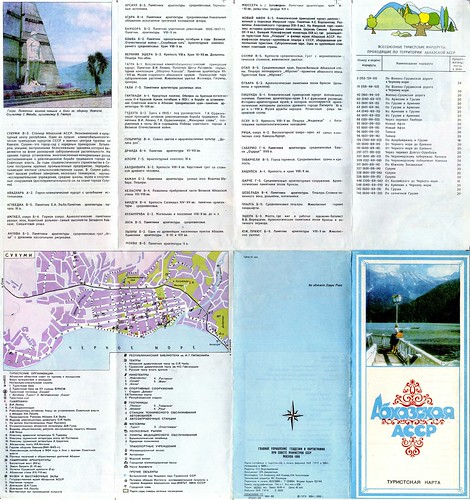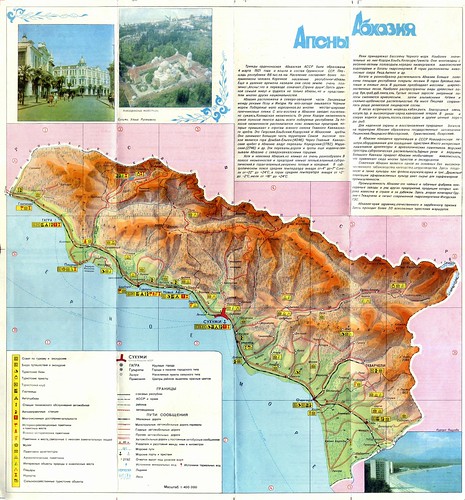Highly politicized map of Bessarabia, from the 1930 edition of the Malaya Sovetskaia Entsiklopediia.
[source: Wikipedia]
It's hard to believe I have neglected this space for three solid months now. Things have been quite busy, and now we're about to enter another transitional period which might make it easier for me to devote more time to blogging but more likely will not.
Therefore, with the thought that this might be the "front-page" post for at least a few weeks, I thought I'd give a rundown of what I've been reading/watching/looking at online, with the assumption that of course if I've found it interesting, you will as well.
The interesting, insidery blog Diplopundit points out a recent blog post by U.S. Ambassador to Russia John Beyrle that made something of a splash, and Russian politicians (and their aides) are also capable of making news these days with nothing more than a click of the "post" button:
ADVISER TO RUSSIAN SPEAKER CALLS FOR RECOGNITION OF MOLDOVA'S BREAKAWAY REGIONOther recent stories about Transnistria have ranged from disappointing to optimistic (and another), and from nutty to nuttier.
Ren TV, privately-owned Russian television channel, Feb. 18, 2010
A statement that could cause a new large international scandal - in his blog today, an adviser to the chairman of the Federation Council of Russia, Aleksandr Chuyev, expressed the opinion that it is time for Russia to recognize the independence of the Dniester region, following Abkhazia and South Ossetia.
Interestingly, this statement coincided with the statements by Igor Smirnov, leader of the Dniester republic, which broke away from Moldova, according to which they are prepared to accept Russian Iskander missiles and other armaments.
Some blogs to read while this one lies dormant:
- The Russia Monitor, which Jesse has turned into a must-read resource.
- Siberian Light - lots on there recently for you sports fans, or sport fans, as I guess they say here in the UK.
- Sean's Russia Blog - Sean's still got it, and now that he is in Russia the posts are even better.
- Robert Amsterdam - comprehensive as always.
- Window on Eurasia - just check it out (especially this post on fake NGOs).
- Poemless - opinionated, in a good, entertaining way.
- A Good Treaty - an interesting NKOTB, which came to my attention via Poemless.
- Morning in Moldova - for those interested in keeping current on developments there.
Other worthwhile reads - the long but engrossing Vanity Fair piece chronicling the rise and fall of the Exile, and (from the dead-tree realm) Keith Gessen's New Yorker piece on the Ukrainian elections and Yushchenko's failures (full text not available online w/o subscription), which captures Ukraine's dilemmas, from the profound to the ridiculous:
[Quoting Leonid Shvets:] 'But Ukraine was a historical actor, and how! I have a friend, one of his grandfathers was in the Galician S.S. and died fighting, and his other grandfather was in the Red Army and made it all the way to Berlin. What do you do with that? Politicians should stay away from it. They should look to the future.' [...]Poking around online to check prices of antique maps, I happened upon Wikipedia's surprisingly content-rich "Atlas of Moldova" page (the source for the illustration above).
Yanukovych's people were taking no chances. If there was an initiative to be seized by taking to the streets, they were going to be the ones to seize it. The...square filled up with Yanukovych 'supporters.' A television crew on the scene conducted interviews. Many supporters were drunk, and men in Yanukovych jackets began cutting off interviews before they began. But they didn't manage to reach one angry woman in time. 'We've been here since 5 a.m., and they still haven't paid us!' she said. 'It's outrageous!' It was an interesting moment in post-Soviet life: a paid participant in a street action meant to fool the media was appealing to the media for justice, because she had not been paid.
I also noticed a Moldovan connection while watching the Winter Olympics (well, not really, my sister clued me in) - apparently, one of the U.S. ice dancing pairs used a song for their routine that was identified as a "Moldavian Folk Dance." NBC makes the video content from the Games somewhat challenging to access, but there are a couple of YouTube clips showing the duo using the routine in previous competitions. Predictably, the comments on both YouTube clips are taken up in large part by arguments over whether this is a Romanian melody or a Moldovan one.
On a more serious note, I've been spending some time remembering my father, who passed away ten years ago this weekend, thanks to some material that has appeared online recently about the work he was doing before I was in the picture (see also this recently posted four-part article - part 1, part 2, part 3, part 4).
And what could be a better soundtrack for such reminiscences than this classic song (an even more old-school video is here)?












































